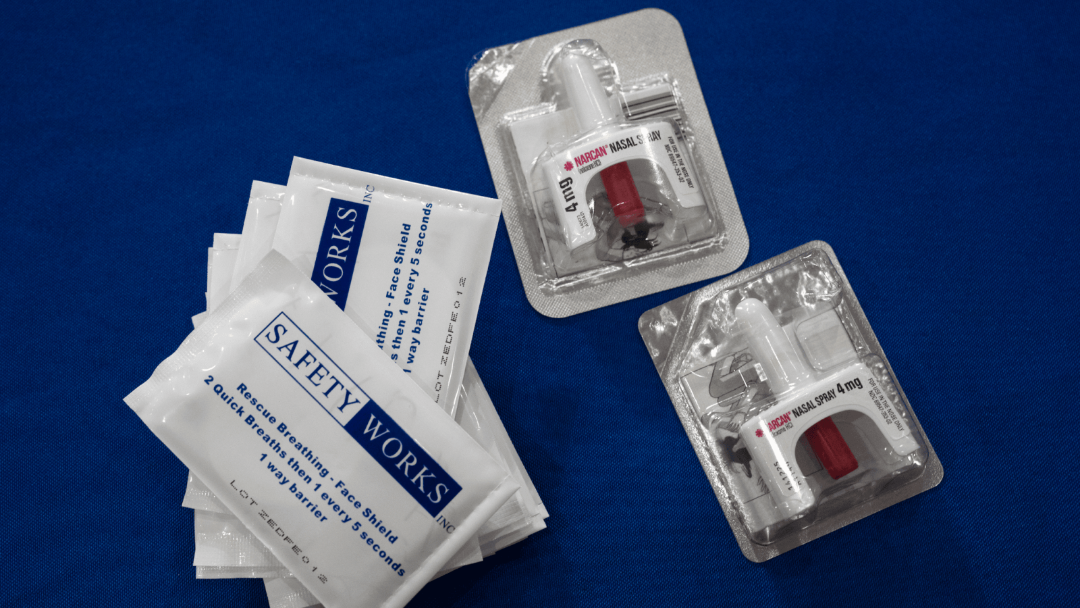 View Winners →
View Winners → How climate change is fueling alcohol-related hospitalizations

By Zoya Teirstein
Many studies have shown that climate change threatens alcohol production around the world, from vineyards in France to whiskey distilleries in Scotland. Now there’s alarming evidence that climate change affects hospitalizations for alcohol consumption, too.
A study published on Sept. 26 of this year in the journal Nature Communications Medicine found that temperature spikes due to climate change have led to a marked increase in the number of hospital visits for alcohol-related disorders — such as alcohol poisoning, alcohol withdrawal, and alcohol-induced sleep disorders — in New York state. “We found that there was an almost linear relationship between temperature increases and alcohol-related disorder hospital admissions and visits,” said Robbie Parks, an environmental epidemiologist at Columbia University and the lead author of the study.
The researchers also found associations between temperature and hospitalizations related to cannabis, cocaine, opioids, and sedative use — a result that was felt most acutely in the suburban and rural areas outside of New York City. But the connection between hospitalizations related to alcohol use and temperature was the most “robust” in the study, Parks said.
Grist dives into this new study to understand the complex relationship between heat-related climate change and the rise in alcohol-related hospital admissions.
A growing body of research that shows Americans have become increasingly reliant on drugs, especially opioids, and alcohol over the past few decades. There has been a fivefold increase in overdose deaths in the United States since the turn of the century. This trend could be made even worse “with rising temperatures under climate change,” the study’s authors write.
By looking at hospital admission records and comparing them to weather data over the course of three decades between 1995 and 2014, the researchers figured out how short-term spikes in temperature over the course of a few days affect hospital admission rates related to substance use.
Even a slight increase in temperature, say from 15 degrees Fahrenheit one week to 20 degrees F the next week, or from 60 to 65 degrees F, led to more hospitalizations for substance use. That trend held strong from negative 22 degrees F all the way up to 86 degrees F — the full range of daily average temperatures across New York state between 1995 and 2014.
“It’s not just seasonal,” Parks said. “If today was 5 degrees hotter than this time last week or this time next week, we would expect more hospital visits for alcohol and substance disorders.”
Drew Angerer/Getty Images via Grist
Anticipation of rising temperatures over the coming decades suggests alcohol- and drug-related hospitalizations will rise commensurately
Daily average temperatures in New York have risen 3 degrees F statewide since 1970 and are expected to rise another 3 degrees F by 2080, due to the warming effects of fossil fuel combustion. This trend has contributed to the short-term temperature fluctuations Parks and his team compared against local hospitalization rates in their study.
Previous research has shown that temperature fluctuations can influence drug use in the United States and overseas, but this study is among the first to look at different types of drugs and find that climate change is linked to spikes in hospital admissions for alcohol-related disorders in the U.S., specifically. Parks and his team found that the pattern was near-universal across the demographic characteristics they looked at, which included age, sex, and social vulnerability (an umbrella term for socioeconomic and minority status). The study controlled for seasonal variations in alcohol use, such as people’s tendency to drink more during the winter holidays and summer months.
“This is obviously relevant in the context of climate change, where we’re anticipating hotter average temperatures, including more frequent and severe heat waves,” said Francis Vergunst, an associate professor at the University of Oslo who has researched the effects of climate change on behavioral disorders and was not involved in the Columbia study. “That means there will be more days in which people potentially could be using substances at harmful levels that could require hospital admission.”
Though it’s not entirely clear why rising temperatures lead to more hospitalizations for substance use, Vergunst said researchers have some ideas about what may be behind the trend. One possible explanation is that people are more impulsive and uninhibited during periods of elevated heat, which leads them to drink more and consume more drugs. For some types of drugs, such as opioids, warm weather can diminish the perceived effects of the drug and lead people to take higher doses to get to their desired level of inebriation, which in turn could contribute to more hospital admissions for overdoses. Drinking alcohol, popularly thought to raise the body’s internal temperature, actually destabilizes the body’s ability to regulate its core temperature, which could also contribute to hospitalizations during periods of elevated heat.
“I think it’s really important to start understanding what those underlying factors are,” Vergunst said, “because that could be the primary potential intervention point.” In other words, understanding what causes people to consume more drugs as temperatures warm will be crucial to preventing them from ending up in the hospital because of an overdose or some other substance-related condition.
The study doesn’t make projections about how future warming due to climate change may influence the prevalence of hospital admissions for substance use, and Parks warned against extrapolating New York’s data to the rest of the country. More research needs to be done to figure out how people living in the nation’s varied and distinct climates respond to rising temperatures. But Parks said that the study hints at the possibility of a larger trend that needs to be investigated. It’s a starting point for beginning to understand how climate change may influence substance use across the nation and elsewhere.
“New York is the fourth-largest state in the country, one of the most diverse, one of the most extreme in terms of socio-demographic profile,” Parks said. “You might surmise, though cautiously, that this would be an issue across the U.S. and worldwide.”
This story was produced by Grist and reviewed and distributed by Stacker Media.
Re-published with CC BY-NC 4.0 License.






































































































